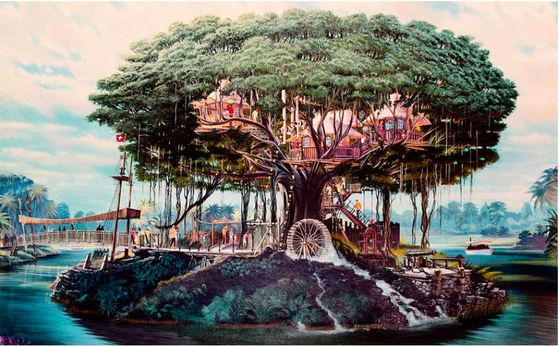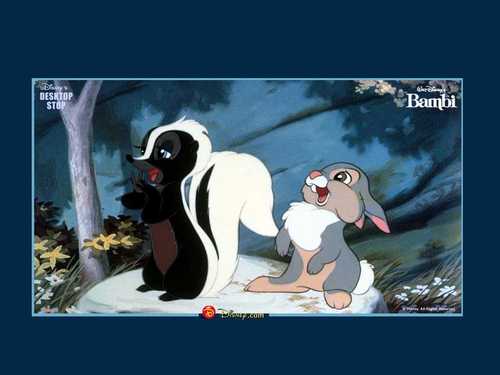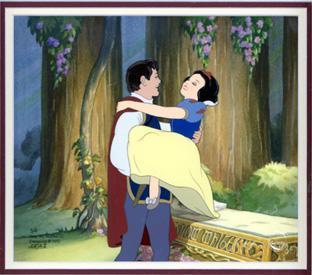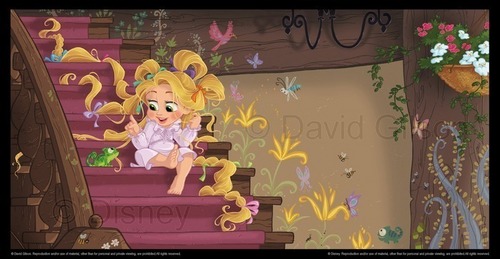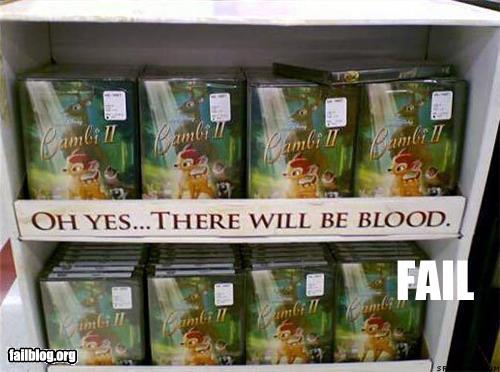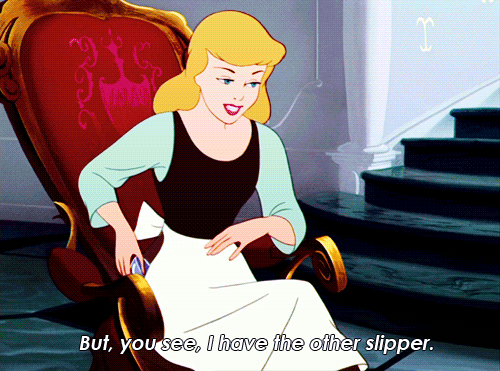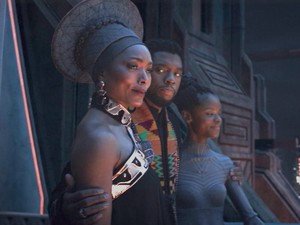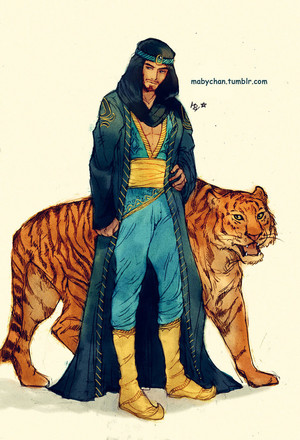This is a hard one to tackle. It is so hard that I was tempted to skip it, but then, this is one of Disney’s truly successful non-animated movies, and it is based on what used to be a very well-known book. I write “used to be” because I honestly doubt that many people have read it nowadays, and when asked about the content, they would most like revert to one of the many adaptations.
The thing is, even before the first filmes about this were made, the original text has a somewhat unique history, since it was never intended for publication. The Swiss Pastor Johann David Wyss wrote the stories down for his sons. One of them, Johann Rudolf Wyss, published the stories later on. Since then, they have been rewritten, added to (especially the English “translations” are somewhat notorious for mixing elements around), there is even a sequel (well, mais a rewrite with an additional story tacked on) por Jules Verne named “The segundo Fatherland” (the English título is “The Castaways of the Flag”, though). So even though I did read the book at one point, it’s really had to say what was added when and por whom.
This in mind I finally decided to discuss the movie mais in context of the different adaptations. I don’t think that I’ll really do it justice, since the earlier movie of 1940 is not available (Disney bought the rights and made sure that it sunk into obscurity), but I’ll do my best.
1. The Setting
To be frank: This family lands on the most unusual Island ever. Not only does it have fauna and flora from three different continents, a lot of it is not even described correctly. For example they actually sweeten the coconut leite with sugar. It’s the kind of inaccuracies you could get away with in the 19th century, since people simply didn’t know better. But from a modern perspective, the whole island is mostly comical.
The same is true for the disney version. It features a tiger, a zebra, an elephant, hyenas, vultures and ostriches, just to mention a few of the animais who certainly don’t all belong in the same place. To its credit, it actually addresses the unlikeliness at one point, but the explanation that there must be a land bridge doesn’t really work considering that 1. In this case some of the animais must have walked a long way through areas where they don’t exist and 2. They are on an island.
2. The Characters
I think I should clear up a misunderstanding first: A lot of people believe that the family which is stranded on the Island has the surname “Robinson”. The truth is that the surname is never even mentioned in the book. Since the characters are moulded after the family of the author, “Wyss” might be a possibility, though. The “Robinson” in the título on the other hand hints to it being a Robinsonade.
The family which originally ends up on the island consists of six persons. Father and Mother (in the English version named William and Elizabeth) and their sons Fritz, Ernst/Ernest, Jacob/Jack and Franz (in some versions, including the disney one, renamed Francis). Most adaptations (unless the fall mais into the category “inspired por it” like the TV Series lost in Space) keep the parents and the two oldest sons, but play fast and loose with the rest of the family. Sometimes daughters are added or replace one of the younger boys.
The only other character somewhat of importance is Emily Montrose, who stranded on a neighbouring island, and whose discovery leads first to her (and her daughters) being “adopted” into the family and later on to the family getting the option to leave.
The disney version gets it right though, never mentioning the surname of the family or the names of the parents. It is in terms of the characters fairly close to the original text. The biggest changes are the omission of Jacob and Emily Montrose being replaced por an entirely different character named Roberta. A lot of minor characters which turn up towards the end of the book are omitted, as well as the natives. Instead the pirates are added.
I have to say, the characters in the books are not really that fleshed out. The father is the narrator and usually the ideal idea of a family patriarch. The mother is wise and so resourceful that she can create a meal out of mais or less everything. Fritz is good with hunting, Ernst is the studious one, Jacob the quick rascal and Franz likes to take care of animals.
And that is mais or less what the characters (minus the absent Jacob, naturally) are in the movie, too. In fact, those basic character traits are exaggerated to a degree that they are archetypes, but certainly not layered characters. Especially Francis falls mais on the annoying side since he constantly throws himself in danger for some idiotic plan (usually involving getting a new pet) and not only gets away unscathed, but also always gets what he wants.
Roberta on the other hand has not character at all, she is a plot device. The only reason she is there is to stir up things between Fritz and Ernest for the segundo half of the movie.
3. The Plot
The idea behind the book was from the get go education. Because of that, large part of it consists of lessons about agriculture and different kinds of crafts, and a lot of episodes have some sort of moral to it (like: never lie, not even as a joke). This is not unusual for a book of this time, but from a modern point of view, it makes it difficult to understand what was so compelling about it. There are certainly some (more or less ridiculous) hunting adventures to make up for it, and it is an exotic island, but otherwise, the book is very episodic, and has not even the saving grace of most other Robinsonades to describe how hard it is to survive without the amenities of civilisation. Not just because the island is a paradise, but since the family strand with the ship, which on topo, início of this had everything on board for a new settlement (but only one family of settlers?) including livestock, they live practically in luxury.
This is one aspect which is amplified in the disney movie to the level of ridiculousness (though the book is not much better, at one point they get the materials for lamps from a conveniently stranded whale). The árvore house the family build in practically no time at all has rooms for everyone, a cozinha (with freezer), a library, and some sort of family room with an organ. Now there is a árvore house in the novel, too, but there the family first sleeps in tents (because that’s what they can built easily), briefly in some sort of árvore house but eventually they mover into a couple of handy caves. In a way though, the árvore house plays perfect into what might draw people to this story. A place without the trappings of society, but with most of the amenities, where you can create your own little início with your own rules, this sounds a little bit like a dream coming true. The disney movie plays heavily on this aspect, and to be honest, what fascinated me as a child and I remembered the most about this movie was this árvore house.
But there is an actual plot, kind of. Well, there isn’t actually much of one in the novel, the family live, learn, go on adventures, meet at one point other people and is finally happy on the island. Only Ernest, “the bookish one” leaves to peruse an education.
The movie did add a little bit mais of a narrative, with limited success, though. It concentrates on showing a lot of animais (that part must be very impressive for the audience upon release) and the “dangers at the exotic place”. While this is in a way a better idea than a bunch of morality and educational lessons, it does mostly work to the disadvantage of the movie. This movie has an official running time of 126 minutes. In the first 30 minutes, the family is shipwrecked in a storm, pirates turn up and are scared away with a pest flag and there is a tubarão as well as a tiger attack. Why is that a problem? Well, for one, with the exception of the tiger none of those dangers have any built-up, they just happen and are pretty fast over again. And two, every time the protagonists escape without any serious consequences, not even as much as a bruise. As a viewer, you very fast reach a point at which you don’t really expect that anything serious will happen, which sucks the suspense out of most of the scenes. Honestly, the only time there is at least some sort of after-effect is when Fritz and Ernest lose their barco and are forced to hike back início together with Roberta. This is easily the best part of the movie, since for the first time there are believable stakes and the conflicts arising when the compass is lost feel mostly real (though are sadly mais or less immediately resolved por stumbling over a zebra in need).
As I mentioned the segundo half of the movie is mostly about the rift between Franz and Ernst over Roberta. And I honestly hate this addition, mostly because she is the only eligible female on the island. In her place, I would be wondering if the interest were in me or in my gender, but nothing of this kind is ever addressed. I also can’t see a father of good social standing being okay with his daughter staying on some godforsaken island. To make this clear, I don’t object that Franz and Ernst show interest, but I do object to the way it is being handled. In the novel, the father notes that Franz and Ernst are simply both happy without woman at their sides (there are prospects for the two younger sons, which are pretty much grown up after the family spend 10 years on the island). In the movie Roberta is mostly thrown in so that Franz can stay on the island without giving up the prospect of a family.
Either way, the movie finally comes to a decent climax when the pirates attack and the family is rescued in the last minuto due to the arrival of Roberta’s father. And like in the book, the family decides to stay on the island, while Ernest leaves to go to university.
4. The Influence
There are a lot of aspects in the disney movie, which have become so connected with the book in the mind of the people that you can find them in most adaptations. Some variation of the árvore house is in mais or less every single one of them. The amor triângulo is often there, too, though the figure of Roberta is often replaced por a character named after one of the female characters in the book. It’s usually easily the most eye-rolling part of any adaption which reverts back to it. The whole climax with the pirates has become so much part of public subconscious that I bet most people believe it being canon. In this case, I really don’t mind, because it did lead to some really good adaptations in which the pirates are worthy antagonists instead of Asian stereotypes.
5. The Conclusion
I guess all what I wrote sounds like I don’t like the movie. I wouldn’t go that far. I even remember that I quite liked it when I saw it as a child. I just think it has the same problem the book has: It didn’t age particularly well. Just showing exotic animais doesn’t make a movie stand out anymore. A lot of the mais recent adaptations do a way better job with creating a realistic environment and a believable struggle for survival. The two-parter “Stranded” (2002) for example concentrates mais on the difficulties to adapt to a new environment and the importance of family than the paradise aspect. But to be fair: one of the reason the mais modern adaptations tend to work better is because they are usually farer removed from the actual book. They add storylines, built up a new narrative with was simply not there originally.
So in terms of the quality of the adaptation, one can hardly blame Disney. The fonte material is just not really that suitable for a movie to begin with. There are a lot of aspects they could have done better, but this isn’t a bad movie por any means. It is just not a particularly great one, either. Instead it is pretty much 1960s standard, serviceable, but forgettable.
The thing is, even before the first filmes about this were made, the original text has a somewhat unique history, since it was never intended for publication. The Swiss Pastor Johann David Wyss wrote the stories down for his sons. One of them, Johann Rudolf Wyss, published the stories later on. Since then, they have been rewritten, added to (especially the English “translations” are somewhat notorious for mixing elements around), there is even a sequel (well, mais a rewrite with an additional story tacked on) por Jules Verne named “The segundo Fatherland” (the English título is “The Castaways of the Flag”, though). So even though I did read the book at one point, it’s really had to say what was added when and por whom.
This in mind I finally decided to discuss the movie mais in context of the different adaptations. I don’t think that I’ll really do it justice, since the earlier movie of 1940 is not available (Disney bought the rights and made sure that it sunk into obscurity), but I’ll do my best.
1. The Setting
To be frank: This family lands on the most unusual Island ever. Not only does it have fauna and flora from three different continents, a lot of it is not even described correctly. For example they actually sweeten the coconut leite with sugar. It’s the kind of inaccuracies you could get away with in the 19th century, since people simply didn’t know better. But from a modern perspective, the whole island is mostly comical.
The same is true for the disney version. It features a tiger, a zebra, an elephant, hyenas, vultures and ostriches, just to mention a few of the animais who certainly don’t all belong in the same place. To its credit, it actually addresses the unlikeliness at one point, but the explanation that there must be a land bridge doesn’t really work considering that 1. In this case some of the animais must have walked a long way through areas where they don’t exist and 2. They are on an island.
2. The Characters
I think I should clear up a misunderstanding first: A lot of people believe that the family which is stranded on the Island has the surname “Robinson”. The truth is that the surname is never even mentioned in the book. Since the characters are moulded after the family of the author, “Wyss” might be a possibility, though. The “Robinson” in the título on the other hand hints to it being a Robinsonade.
The family which originally ends up on the island consists of six persons. Father and Mother (in the English version named William and Elizabeth) and their sons Fritz, Ernst/Ernest, Jacob/Jack and Franz (in some versions, including the disney one, renamed Francis). Most adaptations (unless the fall mais into the category “inspired por it” like the TV Series lost in Space) keep the parents and the two oldest sons, but play fast and loose with the rest of the family. Sometimes daughters are added or replace one of the younger boys.
The only other character somewhat of importance is Emily Montrose, who stranded on a neighbouring island, and whose discovery leads first to her (and her daughters) being “adopted” into the family and later on to the family getting the option to leave.
The disney version gets it right though, never mentioning the surname of the family or the names of the parents. It is in terms of the characters fairly close to the original text. The biggest changes are the omission of Jacob and Emily Montrose being replaced por an entirely different character named Roberta. A lot of minor characters which turn up towards the end of the book are omitted, as well as the natives. Instead the pirates are added.
I have to say, the characters in the books are not really that fleshed out. The father is the narrator and usually the ideal idea of a family patriarch. The mother is wise and so resourceful that she can create a meal out of mais or less everything. Fritz is good with hunting, Ernst is the studious one, Jacob the quick rascal and Franz likes to take care of animals.
And that is mais or less what the characters (minus the absent Jacob, naturally) are in the movie, too. In fact, those basic character traits are exaggerated to a degree that they are archetypes, but certainly not layered characters. Especially Francis falls mais on the annoying side since he constantly throws himself in danger for some idiotic plan (usually involving getting a new pet) and not only gets away unscathed, but also always gets what he wants.
Roberta on the other hand has not character at all, she is a plot device. The only reason she is there is to stir up things between Fritz and Ernest for the segundo half of the movie.
3. The Plot
The idea behind the book was from the get go education. Because of that, large part of it consists of lessons about agriculture and different kinds of crafts, and a lot of episodes have some sort of moral to it (like: never lie, not even as a joke). This is not unusual for a book of this time, but from a modern point of view, it makes it difficult to understand what was so compelling about it. There are certainly some (more or less ridiculous) hunting adventures to make up for it, and it is an exotic island, but otherwise, the book is very episodic, and has not even the saving grace of most other Robinsonades to describe how hard it is to survive without the amenities of civilisation. Not just because the island is a paradise, but since the family strand with the ship, which on topo, início of this had everything on board for a new settlement (but only one family of settlers?) including livestock, they live practically in luxury.
This is one aspect which is amplified in the disney movie to the level of ridiculousness (though the book is not much better, at one point they get the materials for lamps from a conveniently stranded whale). The árvore house the family build in practically no time at all has rooms for everyone, a cozinha (with freezer), a library, and some sort of family room with an organ. Now there is a árvore house in the novel, too, but there the family first sleeps in tents (because that’s what they can built easily), briefly in some sort of árvore house but eventually they mover into a couple of handy caves. In a way though, the árvore house plays perfect into what might draw people to this story. A place without the trappings of society, but with most of the amenities, where you can create your own little início with your own rules, this sounds a little bit like a dream coming true. The disney movie plays heavily on this aspect, and to be honest, what fascinated me as a child and I remembered the most about this movie was this árvore house.
But there is an actual plot, kind of. Well, there isn’t actually much of one in the novel, the family live, learn, go on adventures, meet at one point other people and is finally happy on the island. Only Ernest, “the bookish one” leaves to peruse an education.
The movie did add a little bit mais of a narrative, with limited success, though. It concentrates on showing a lot of animais (that part must be very impressive for the audience upon release) and the “dangers at the exotic place”. While this is in a way a better idea than a bunch of morality and educational lessons, it does mostly work to the disadvantage of the movie. This movie has an official running time of 126 minutes. In the first 30 minutes, the family is shipwrecked in a storm, pirates turn up and are scared away with a pest flag and there is a tubarão as well as a tiger attack. Why is that a problem? Well, for one, with the exception of the tiger none of those dangers have any built-up, they just happen and are pretty fast over again. And two, every time the protagonists escape without any serious consequences, not even as much as a bruise. As a viewer, you very fast reach a point at which you don’t really expect that anything serious will happen, which sucks the suspense out of most of the scenes. Honestly, the only time there is at least some sort of after-effect is when Fritz and Ernest lose their barco and are forced to hike back início together with Roberta. This is easily the best part of the movie, since for the first time there are believable stakes and the conflicts arising when the compass is lost feel mostly real (though are sadly mais or less immediately resolved por stumbling over a zebra in need).
As I mentioned the segundo half of the movie is mostly about the rift between Franz and Ernst over Roberta. And I honestly hate this addition, mostly because she is the only eligible female on the island. In her place, I would be wondering if the interest were in me or in my gender, but nothing of this kind is ever addressed. I also can’t see a father of good social standing being okay with his daughter staying on some godforsaken island. To make this clear, I don’t object that Franz and Ernst show interest, but I do object to the way it is being handled. In the novel, the father notes that Franz and Ernst are simply both happy without woman at their sides (there are prospects for the two younger sons, which are pretty much grown up after the family spend 10 years on the island). In the movie Roberta is mostly thrown in so that Franz can stay on the island without giving up the prospect of a family.
Either way, the movie finally comes to a decent climax when the pirates attack and the family is rescued in the last minuto due to the arrival of Roberta’s father. And like in the book, the family decides to stay on the island, while Ernest leaves to go to university.
4. The Influence
There are a lot of aspects in the disney movie, which have become so connected with the book in the mind of the people that you can find them in most adaptations. Some variation of the árvore house is in mais or less every single one of them. The amor triângulo is often there, too, though the figure of Roberta is often replaced por a character named after one of the female characters in the book. It’s usually easily the most eye-rolling part of any adaption which reverts back to it. The whole climax with the pirates has become so much part of public subconscious that I bet most people believe it being canon. In this case, I really don’t mind, because it did lead to some really good adaptations in which the pirates are worthy antagonists instead of Asian stereotypes.
5. The Conclusion
I guess all what I wrote sounds like I don’t like the movie. I wouldn’t go that far. I even remember that I quite liked it when I saw it as a child. I just think it has the same problem the book has: It didn’t age particularly well. Just showing exotic animais doesn’t make a movie stand out anymore. A lot of the mais recent adaptations do a way better job with creating a realistic environment and a believable struggle for survival. The two-parter “Stranded” (2002) for example concentrates mais on the difficulties to adapt to a new environment and the importance of family than the paradise aspect. But to be fair: one of the reason the mais modern adaptations tend to work better is because they are usually farer removed from the actual book. They add storylines, built up a new narrative with was simply not there originally.
So in terms of the quality of the adaptation, one can hardly blame Disney. The fonte material is just not really that suitable for a movie to begin with. There are a lot of aspects they could have done better, but this isn’t a bad movie por any means. It is just not a particularly great one, either. Instead it is pretty much 1960s standard, serviceable, but forgettable.


